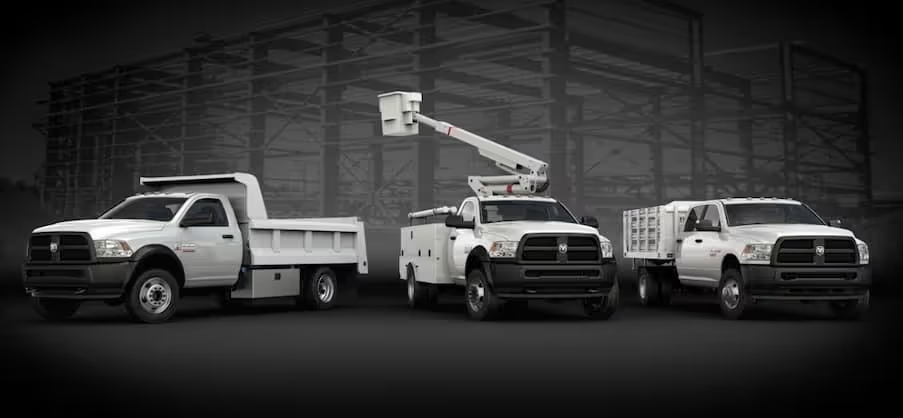Responding to Rapid Changes in Vehicle Technology
Over the past decade, the landscape for emergency and commercial vehicles has shifted stunningly. Fleet managers and department leaders find that a uniform vehicle solution can’t longer address the unique demands of different missions and industries. Digital dashboards, push-to-talk communication systems, built-in secure storage, and onboard computer terminals are now baseline requirements for many organizations. With such a high level of expectation, it’s become essential to work with specialized upfitters who can provide innovative and reliable modifications. In particular, expert teams like TCS Upfitting are helping bridge the gap between off-the-lot factory models and highly functional, mission-specific vehicles. Car technology is constantly evolving, with law enforcement and fire departments requiring mobile data terminals for real-time information and thermal imaging systems for emergency response. Upfitting solutions must offer current and future-ready flexibility, allowing for upgrades as new technologies and operational needs emerge, ensuring vehicles remain relevant for years.
Key Features for Effective Emergency and Commercial Upfitting
Emergency and commercial upfitting in vehicles requires reliable lighting and sirens, organized cargo space, advanced power management, shock-absorbing computer mounts, and durable materials. LED lighting and multi-pattern sirens improve scene safety and reduce power consumption. Custom shelving, secure gun racks, and modular storage units maximize cargo space, while advanced batteries and power distribution centers keep electronics running during extended shifts. Specialized shock-absorbing mounts secure expensive laptops and tablets, reducing equipment damage. Weather-resistant materials extend the lifespan of upfits, lowering long-term costs and improving hygiene and comfort. Fleet management surveys show high satisfaction with upfits prioritizing innovation and practicality, with a growing focus on ergonomics, intuitive layouts, and user-driven enhancements.
Safety Standards and Compliance Considerations
Regulatory compliance is crucial in every upfit project, ensuring safety by avoiding compromise on essential vehicle features. The National Highway Traffic Safety Administration (NHTSA) sets strict rules for vehicle modifications, including electrical wiring, visibility, emergency lighting, and driver field-of-view. Upfitters must navigate local and state laws, especially for vehicles with unique equipment. Failure to meet standards can result in fines or downtime. Experienced upfitters maintain robust compliance processes and clear documentation, helping agencies and companies avoid liabilities and maintain legal, safe, and certified vehicles.
Step-By-Step: The Modern Upfitting Process
The modern upfitting involves a series of steps, including needs assessment, vehicle selection, design and layout, component sourcing, installation, testing, and handover. This process starts with thorough interviews and site visits to understand specific operational demands. Vehicle models are chosen based on payload, power, adaptability, and compatibility with existing fleet management tools. Upfitting specialists create blueprints and mockups, incorporating user feedback for accessibility and legal compliance. Skilled technicians handle modifications, ensuring quality control. The final systems undergo rigorous operational testing before delivery.
How New Tech is Driving the Future of Vehicle Upfitting
Advanced technology is revolutionizing specialty vehicle upfitting, with fleets integrating cloud-connected diagnostics, voice-command controls, and real-time tracking to enhance security and efficiency. AI-driven dash cams and automated fleet monitors improve driver safety and streamline route planning. Police agencies report shorter administrative times and reduced paperwork due to seamless data transfer. The demand for integrated solutions is rising, blending hardware and software to futureproof vehicles and support data-driven fleet management.
Integrating Sustainability into Vehicle Upfitting
Fleet managers and public agencies increasingly request sustainability-promoting upgrades, such as hybrid drive systems, idle-reducing technologies, and energy-saving LED equipment. This shift reduces environmental impact and operating costs over the vehicle’s life. Municipal leaders and private fleets favor hybrid or fully electric platforms for new builds due to lower emissions and maintenance expenses.
Best Practices for Choosing Upfitting Partners
Choose a knowledgeable upfitting partner with experience, proven results, safety and compliance expertise, transparent communication, robust warranty programs, and responsive technical support. Regular project status updates, detailed documentation, and open channels are essential. Seek references and first-hand feedback from organizations with similar vehicles, geographies, or operational needs. A well-established partnership boosts efficiency and performance, regardless of industry or organizational mission, and is crucial for successful upfitting projects.
